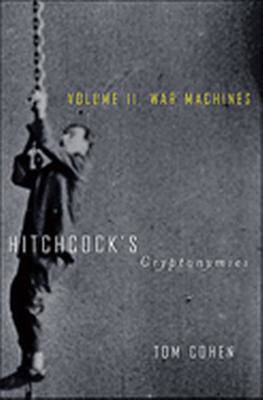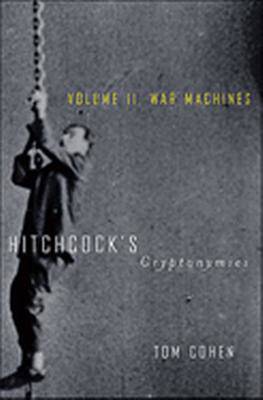
- Afhalen na 1 uur in een winkel met voorraad
- Gratis thuislevering in België vanaf € 30
- Ruim aanbod met 7 miljoen producten
- Afhalen na 1 uur in een winkel met voorraad
- Gratis thuislevering in België vanaf € 30
- Ruim aanbod met 7 miljoen producten
Zoeken
€ 36,45
+ 72 punten
Omschrijving
In the first The Man Who Knew Too Much, Alfred Hitchcock films a clay pigeon crossing the sky, a dark disc resembling a black sun. When the same work takes viewers into a temple for sun worshippers (it turns out to be a front for spies), another black orb is introduced: a black marble used to hypnotize initiates. Tom Cohen traces this motif--and many others--seeing it as an explicit challenge both to Enlightenment-era protocols of representation and to the auteurism that has defined studies of Hitchcock. This second volume of Hitchcock's Cryptonomies presents the director's works as a radical collage of images and absences, letters and numbers, citations and sounds that together mark Hitchcock as a knowing figure who was entirely aware of his--and cinema's--place at the dawn of a global media culture, as well as of the cinema's revolutionary impact on perception and memory. Cohen's provocative interrogation culminates in an innovative close analysis of To Catch a Thief, a work disregarded by the critical establishment as being merely light entertainment. Disguised as thrillers, Hitchcock's films are as subversive as the spies around which their plots often revolve. Cohen sees them as "war machines"--hiding in plain sight at the center of the film canon--designed as much to erode traditional models of home, family, and state as to sabotage increasingly obsolete ways of seeing and knowing.Tom Cohen is professor of American literary, critical, and cinematic studies at the University at Albany. He is the author of Anti-Mimesis: From Plato to Hitchcock and Ideology and Inscription: "Cultural Studies" after Benjamin, and coeditor of Material Events (Minnesota, 2000).
Specificaties
Betrokkenen
- Auteur(s):
- Uitgeverij:
Inhoud
- Aantal bladzijden:
- 320
- Taal:
- Engels
Eigenschappen
- Productcode (EAN):
- 9780816641710
- Verschijningsdatum:
- 1/01/2005
- Uitvoering:
- Paperback
- Formaat:
- Trade paperback (VS)
- Afmetingen:
- 153 mm x 229 mm
- Gewicht:
- 412 g

Alleen bij Standaard Boekhandel
+ 72 punten op je klantenkaart van Standaard Boekhandel
Beoordelingen
We publiceren alleen reviews die voldoen aan de voorwaarden voor reviews. Bekijk onze voorwaarden voor reviews.











